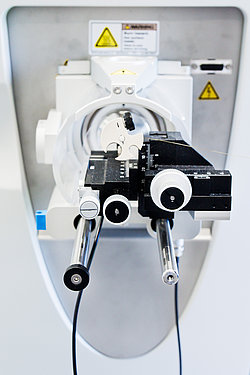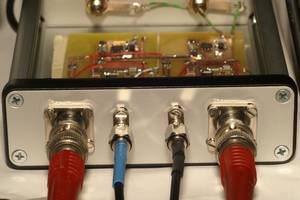


Foremost, the group focuses at developing novel receptor materials combining biological recognition principles with the ruggedness of artificial materials. These are then tested mainly for their suitability in chemical sensor applications. Such applications offer only one theoretical (and also practical) plate of separation, which most of all requires thoroughly optimized selectivity. This currently is achieved by two different techniques: On the one hand by designing suitable affinity materials that interact with the respective analyte for instance based on its hydrophilic or hydrophobic properties or on Pearson’s concept of hard and soft metal (salts) and compounds. On the other hand, so-called Molecular Imprinting is also widely applied. This technique allows one to generate “plaster cast” of a template species in a macromolecular Matrix. The resulting cavities are ideally adapted to the geometrical and functional properties of the respective target analyte. Among others, imprinting offers a major advantage to analytical chemistry: possible target species range over five to six orders of magnitude in size, namely from metal cations of tenths of nanometers to entire micro organisms reaching some micrometers and beyond.
The morphology of the sensor material can be optimized following the needs of the concrete application. It ranges from smoot thin films over nanostructured films to depositing functional nanoparticles. Whenever feasible, the group aims at comparing the analytical properties of its artificial recognition materials to those of natural ligands, receptors or antibodies.
Keeping in mind real-life application of the respective system, another focus of research is the development of synthesis protocols allowing for including such artificial receptors into mass-production processes, e.g. in semiconductor industry or printing. Furthermore, composite materials gain increasing importance. Finally, selectivity can be further increased by combining individual sensors to sensor arrays followed by chemometric data evaluation.
For reaching this purposes, the group utilizes a wide range of experimental techniques, including sensor electronics (with a focus on mass-sensitive and capacitive/conductive devices), molecular spectrometry from UV to FT-IR including luminescence and surface analysis (AFM/STM).


University of Vienna
Währinger Straße 38
1010 Vienna
T: +43-1-4277-52301
F: +43-1-4277-9523





